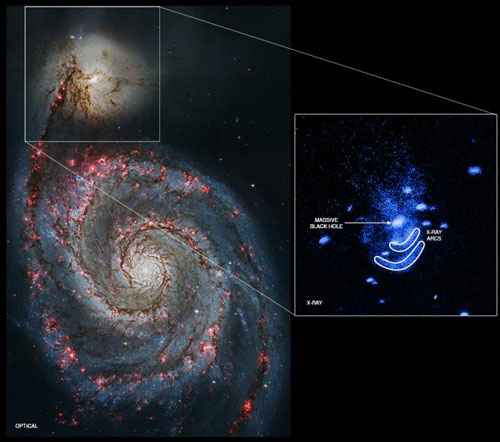 Researchers have discovered a powerful galactic blast produced by a giant black hole about 26 million light years from Earth. The black hole is the nearest supermassive black hole to Earth that is currently undergoing such violent outbursts.
Researchers have discovered a powerful galactic blast produced by a giant black hole about 26 million light years from Earth. The black hole is the nearest supermassive black hole to Earth that is currently undergoing such violent outbursts.
Jan 6th, 2016
Read more
New work indicates that one recently developed method for determining a star's age needs to be recalibrated for stars that are older than our Sun. This is due to new information about the way older stars spin, as spin rate is one of the few windows into stellar ages.
Jan 4th, 2016
Read more
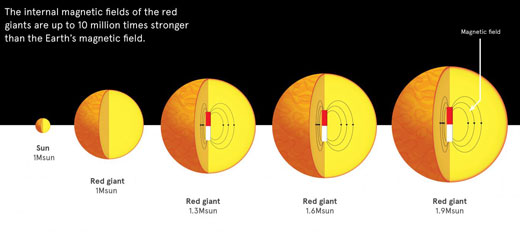 An international group of astronomers has discovered strong magnetic fields are common in stars, not rare as previously thought, which will dramatically impact our understanding of how stars evolve.
An international group of astronomers has discovered strong magnetic fields are common in stars, not rare as previously thought, which will dramatically impact our understanding of how stars evolve.
Jan 4th, 2016
Read more
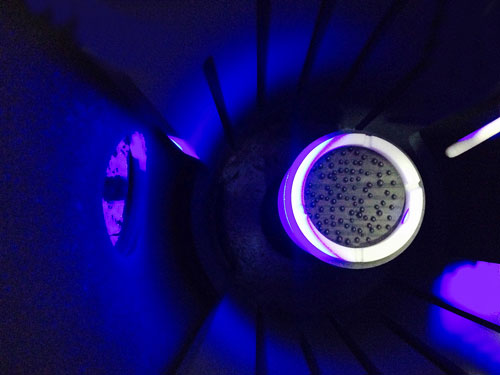 How are asteroids and planets formed from stony particles? This question is being explored in an experiment by scientists who have developed beads made of a special type of glass. They form the composition of the rock particles as naturally as possible on a small scale.
How are asteroids and planets formed from stony particles? This question is being explored in an experiment by scientists who have developed beads made of a special type of glass. They form the composition of the rock particles as naturally as possible on a small scale.
Jan 4th, 2016
Read more
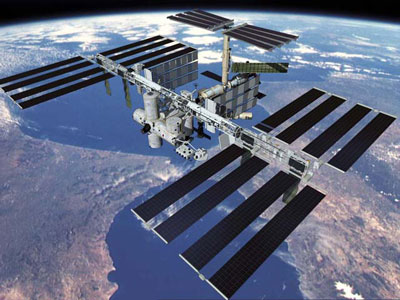 The International Space Station is the longest-running continuously inhabited human outpost in space - this year it celebrated its 15th anniversary. As the ISS orbits the Earth it is essentially in a state of free fall, counteracting the Earth's gravity and providing an ideal platform for science in space.
The International Space Station is the longest-running continuously inhabited human outpost in space - this year it celebrated its 15th anniversary. As the ISS orbits the Earth it is essentially in a state of free fall, counteracting the Earth's gravity and providing an ideal platform for science in space.
Dec 30th, 2015
Read more
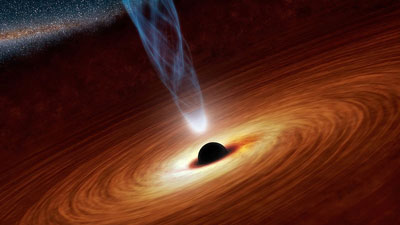 Black holes at the heart of galaxies could swell to 50 billion times the mass of the sun before losing the discs of gas they rely on to sustain themselves.
Black holes at the heart of galaxies could swell to 50 billion times the mass of the sun before losing the discs of gas they rely on to sustain themselves.
Dec 18th, 2015
Read more
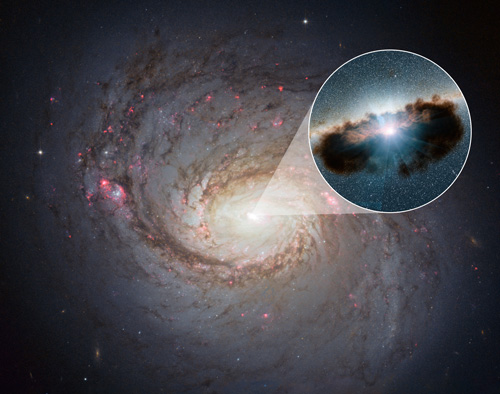 NuSTAR recently looked inside one of the densest doughnuts known around a supermassive black hole. This black hole lies at the centre of a well-studied spiral galaxy called NGC 1068, located 47 million light-years away in the direction of the constellation of Cetus. The observations revealed a clumpy doughnut.
NuSTAR recently looked inside one of the densest doughnuts known around a supermassive black hole. This black hole lies at the centre of a well-studied spiral galaxy called NGC 1068, located 47 million light-years away in the direction of the constellation of Cetus. The observations revealed a clumpy doughnut.
Dec 17th, 2015
Read more
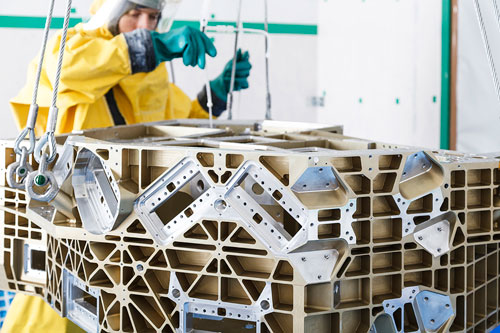 Components used on a space mission must be cleaned meticulously. Fraunhofer researchers designed a cleanroom for the European Space Agency in which the most infinitesimal contaminants can be removed.
Components used on a space mission must be cleaned meticulously. Fraunhofer researchers designed a cleanroom for the European Space Agency in which the most infinitesimal contaminants can be removed.
Dec 17th, 2015
Read more
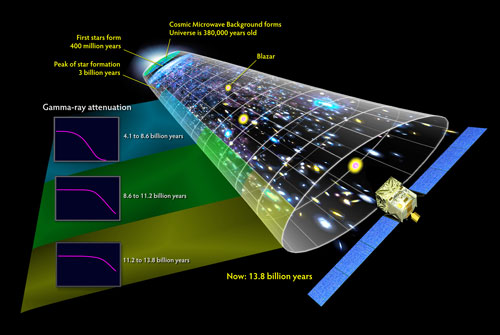 A long time ago in a galaxy half the universe away, a flood of high-energy gamma rays began its journey to Earth. Observations provide a surprising look into the environment near a supermassive black hole at the galaxy's center and offer a glimpse into the state of the cosmos 7 billion years ago.
A long time ago in a galaxy half the universe away, a flood of high-energy gamma rays began its journey to Earth. Observations provide a surprising look into the environment near a supermassive black hole at the galaxy's center and offer a glimpse into the state of the cosmos 7 billion years ago.
Dec 16th, 2015
Read more
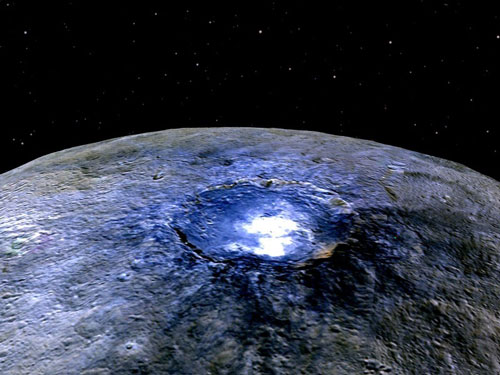 The Occator crater on the surface is active - data from NASA's Dawn mission indicate frozen water sublimating from its center.
The Occator crater on the surface is active - data from NASA's Dawn mission indicate frozen water sublimating from its center.
Dec 9th, 2015
Read more
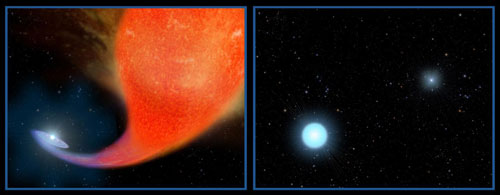 Half of all stars are in binaries - pairs of stars that orbit each other. Half of binary stars orbit so close that gravitational interaction significantly affects their evolution and demise. Today, scientists confirmed one of the possible explanations for a common group of exceptions: the blue stragglers.
Half of all stars are in binaries - pairs of stars that orbit each other. Half of binary stars orbit so close that gravitational interaction significantly affects their evolution and demise. Today, scientists confirmed one of the possible explanations for a common group of exceptions: the blue stragglers.
Dec 8th, 2015
Read more
Rare mergers of binary neutron stars proposed as the source of radioactive plutonium-244 in nature.
Dec 8th, 2015
Read more
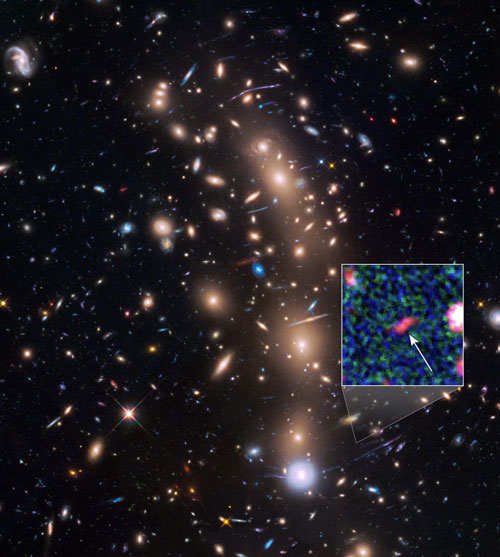 Astronomers harnessing the combined power of NASA's Hubble and Spitzer space telescopes have found the faintest object ever seen in the early universe. It existed about 400 million years after the big bang, 13.8 billion years ago.
Astronomers harnessing the combined power of NASA's Hubble and Spitzer space telescopes have found the faintest object ever seen in the early universe. It existed about 400 million years after the big bang, 13.8 billion years ago.
Dec 3rd, 2015
Read more
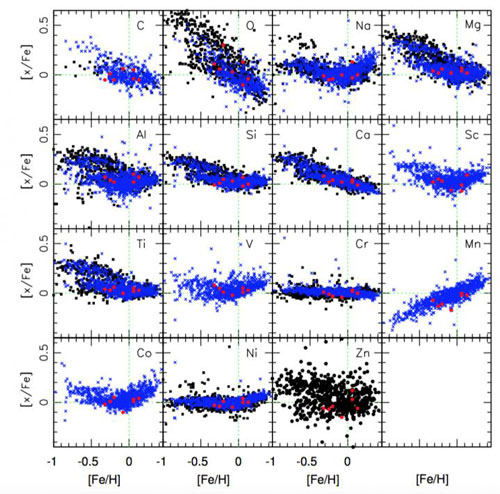 As astronomers continue to find more and more planets around stars beyond our own Sun, they are trying to discover patterns and features that indicate what types of planets are likely to form around different kinds of stars. This will hopefully inform and make more efficient the ongoing planet hunting process, and also help us better understand our own Solar System's formation.
As astronomers continue to find more and more planets around stars beyond our own Sun, they are trying to discover patterns and features that indicate what types of planets are likely to form around different kinds of stars. This will hopefully inform and make more efficient the ongoing planet hunting process, and also help us better understand our own Solar System's formation.
Dec 3rd, 2015
Read more
For the first time, astronomers have detected evidence of magnetic fields near Sagittarius A*, the black hole at the centre of the Milky Way, taking the study of black hole growth from theoretical expectation to empirical fact.
Dec 3rd, 2015
Read more
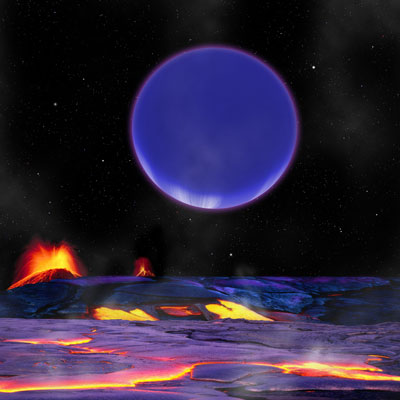 Imagine two nearby exoplanets orbiting the same sun, each with its own indigenous civilisation. They're going through history either as companionable neighbours or deadly rivals. This is a familiar situation in science fiction, but could it ever happen?
Imagine two nearby exoplanets orbiting the same sun, each with its own indigenous civilisation. They're going through history either as companionable neighbours or deadly rivals. This is a familiar situation in science fiction, but could it ever happen?
Dec 2nd, 2015
Read more
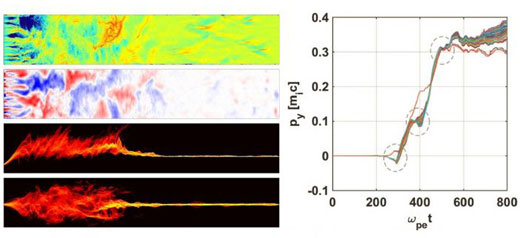 Stochastic acceleration and shock acceleration are well recognized as key mechanisms for cosmic ray generation since first proposed by Fermi. So far, these two mechanisms have been investigated widely by analytical models and numerical simulations, but often modeled separately. Researchers have found that the two mechanisms can occur naturally in sequential two stages when a lepton flow propagates in a background interstellar plasma.
Stochastic acceleration and shock acceleration are well recognized as key mechanisms for cosmic ray generation since first proposed by Fermi. So far, these two mechanisms have been investigated widely by analytical models and numerical simulations, but often modeled separately. Researchers have found that the two mechanisms can occur naturally in sequential two stages when a lepton flow propagates in a background interstellar plasma.
Dec 2nd, 2015
Read more
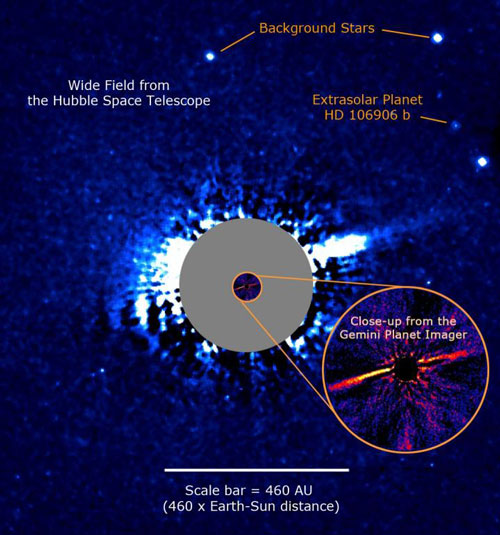 A planet discovered last year sitting at an unusually large distance from its star - 16 times farther than Pluto is from the sun - may have been kicked out of its birthplace close to the star in a process similar to what may have happened early in our own solar system's history.
A planet discovered last year sitting at an unusually large distance from its star - 16 times farther than Pluto is from the sun - may have been kicked out of its birthplace close to the star in a process similar to what may have happened early in our own solar system's history.
Dec 1st, 2015
Read more
 Researchers have discovered a powerful galactic blast produced by a giant black hole about 26 million light years from Earth. The black hole is the nearest supermassive black hole to Earth that is currently undergoing such violent outbursts.
Researchers have discovered a powerful galactic blast produced by a giant black hole about 26 million light years from Earth. The black hole is the nearest supermassive black hole to Earth that is currently undergoing such violent outbursts.
 Subscribe to our Space Exploration News feed
Subscribe to our Space Exploration News feed












